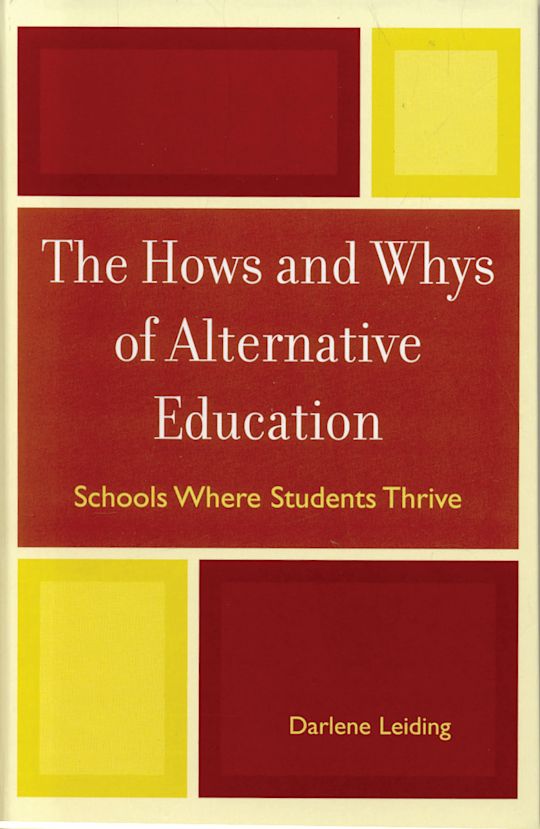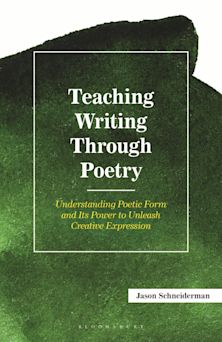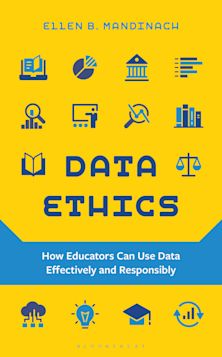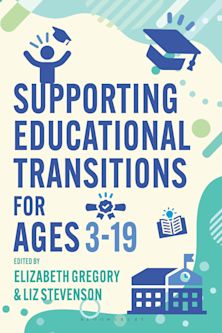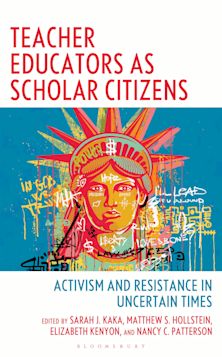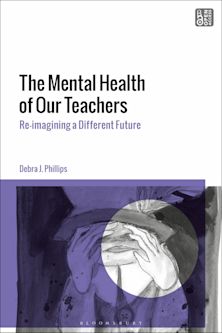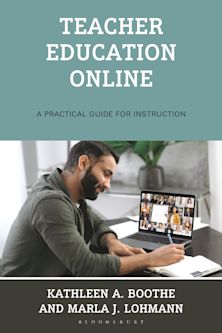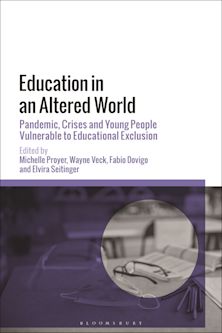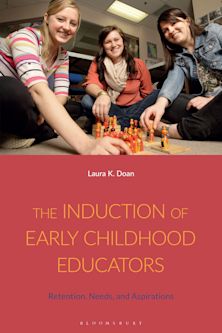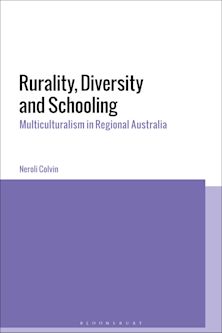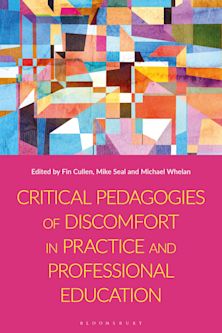- Home
- ACADEMIC
- Education
- Teacher Education
- The Hows and Whys of Alternative Education
This product is usually dispatched within 1 week
- Delivery and returns info
-
Free US delivery on orders $35 or over
You must sign in to add this item to your wishlist. Please sign in or create an account
Description
It has become a cliché to say that these are precarious times for public schools. It is also a reality. On the one hand, improving schools is the public's top priority. On the other, significant numbers of Americans are giving up on public schools. Today's parents and, indeed, all voters, need to see signs of success if they are to support public schools. Parents must be given choices when it comes to their child's education. This book acknowledges that enormous problems outside schools do not mean that educators inside schools cannot do a better job at creating a meaningful learning environment. It is designed to inform and assist those who wish to choose their child's educational settings.
The Hows and Whys of Alternative Education offers the essential information on the history of alternative education, school choice, alternative schools, charter schools, magnet schools, homeschooling, private schools, vouchers, distance learning, teacher/student/parent attraction, and the future of educational choice.
Table of Contents
Chapter 2 School Choice: Trust for Parents' Picks
Chapter 3 Alternative Schools: A School of One's Own
Chapter 4 Charter Schools: A Beacon of Hope
Chapter 5 Magnet Schools: The Stuff of Kids' Dreams
Chapter 6 Homeschooling: Testing Our Freedom
Chapter 7 Private Schools: An Investment in the Future
Chapter 8 Vouchers: Threatening to Make Schools Improve
Chapter 9 Distance Learning: The Wave of the Future
Chapter 10 Teacher/Student/Parent Attraction
Chapter 11 The Future of Educational Choice: Does It Work?
Product details
| Published | Oct 22 2007 |
|---|---|
| Format | Hardback |
| Edition | 1st |
| Extent | 198 |
| ISBN | 9781578866878 |
| Imprint | R&L Education |
| Dimensions | 9 x 6 inches |
| Publisher | Bloomsbury Publishing |
About the contributors
Reviews
-
Darlene Leiding has once again proven she is one of the country's leading advocates for the rights of all children to receive a quality education. In her latest book, she again raises the point that education must be tailored to the learning needs and style of the student, not the teaching style of the instructor. She makes it clear that a "one size fits all" approach to education in this melting pot we call America threatens the future of our youth…She presents a comprehensive look at school choice and lays out the pros and cons of the various options to make education more accessible, engaging and successful for the divergent segments of today's youth.
John King Ed.D., senior vice-president of Academic Affairs, University / Art & Design Group (IL)
-
Darlene Leiding uses her perspective on charter school performance to suggest a more positive approach to an educational crisis in America. She presents productive alternatives to a public school system locked up in bureaucracy and ineffective politically correct thinking. This is a fresh new way of looking at education which all administrators should take to heart.
Darwin Burda, account manager, EMC Publishing Corp., Independent Publishers Representative, Wasilla, Alaska
-
This is a must read book for the individual who has a predisposition to helping children, no matter what the vehicle. Whether the child will best thrive in a home school, private school, or alternative public school setting, the book can assist parents intheir discernment. It can provide parents and guardians with the technical and conceptual tools necessary to comfortably choose a school that will educate and liberate each child in need. The book may also be of benefit to individuals, especially administrators, educators and board members of public and private schools who occasionally allow the collective history to pass as innovative and new. The book can assist the reader in an exploration of alternative education and its many flavors. It can aidthe reader in an understanding that the movement of alternative education is as old as Plato choosing a log that will fit the willing learner. As a mature movement in education, it calls out not to be tamed nor resisted, but to be utilized for the benefit of all children. I know Dr. Darlene Leiding as an accomplished educator, administrator and now as a leading advocate for the needs of all children. I am indebted to this writer for her contributions to my education.
Charles A. Speiker, Minnesota Department of Education
-
Dr. Leiding presents a compelling reason for the development of alternative programs for educating America's youth. Her extensive background in working with disadvantaged children in urban schools and her research provide an insight that can be most helpful for parents, educators, and policy makers. Dr. Leiding cites that many children do not come to school prepared to learn and, as effective as our public schools are with most students, many schools are not prepared to deal with them. Because of circumstances beyond the control of the school, these children continue to be a challenge to educate. As she points out, the goal is to provide an education where students will become self-sufficient and self-empowered adults, with the skills to be marketable for jobs and/or able to move on to a post secondary education. However, the methodology or approach providing that education may have to be different from the mainstream education that is typically considered public education.
Judy Schulze, educational consultant, Mankato, MN, pre-K - 8th grade educator
-
This is a must read book for the individual who has a predisposition to helping children, no matter what the vehicle. Whether the child will best thrive in a home school, private school, or alternative public school setting, the book can assist parents in their discernment. It can provide parents and guardians with the technical and conceptual tools necessary to comfortably choose a school that will educate and liberate each child in need.
The book may also be of benefit to individuals, especially administrators, educators and board members of public and private schools who occasionally allow the collective history to pass as innovative and new. The book can assist the reader in an exploration of alternative education and "its many flavors." It can aid the reader in an understanding that the movement of alternative education is as old as Plato choosing a log that will fit the willing learner. As a mature movement in education, it calls out not to be tamed nor resisted, but to be utilized for the benefit of all children.
I know Dr. Darlene Leiding as an accomplished educator, administrator and now as a leading advocate for the needs of all children. I am indebted to this writer for her contributions to my education.Charles A. Speiker, Minnesota Department of Education








